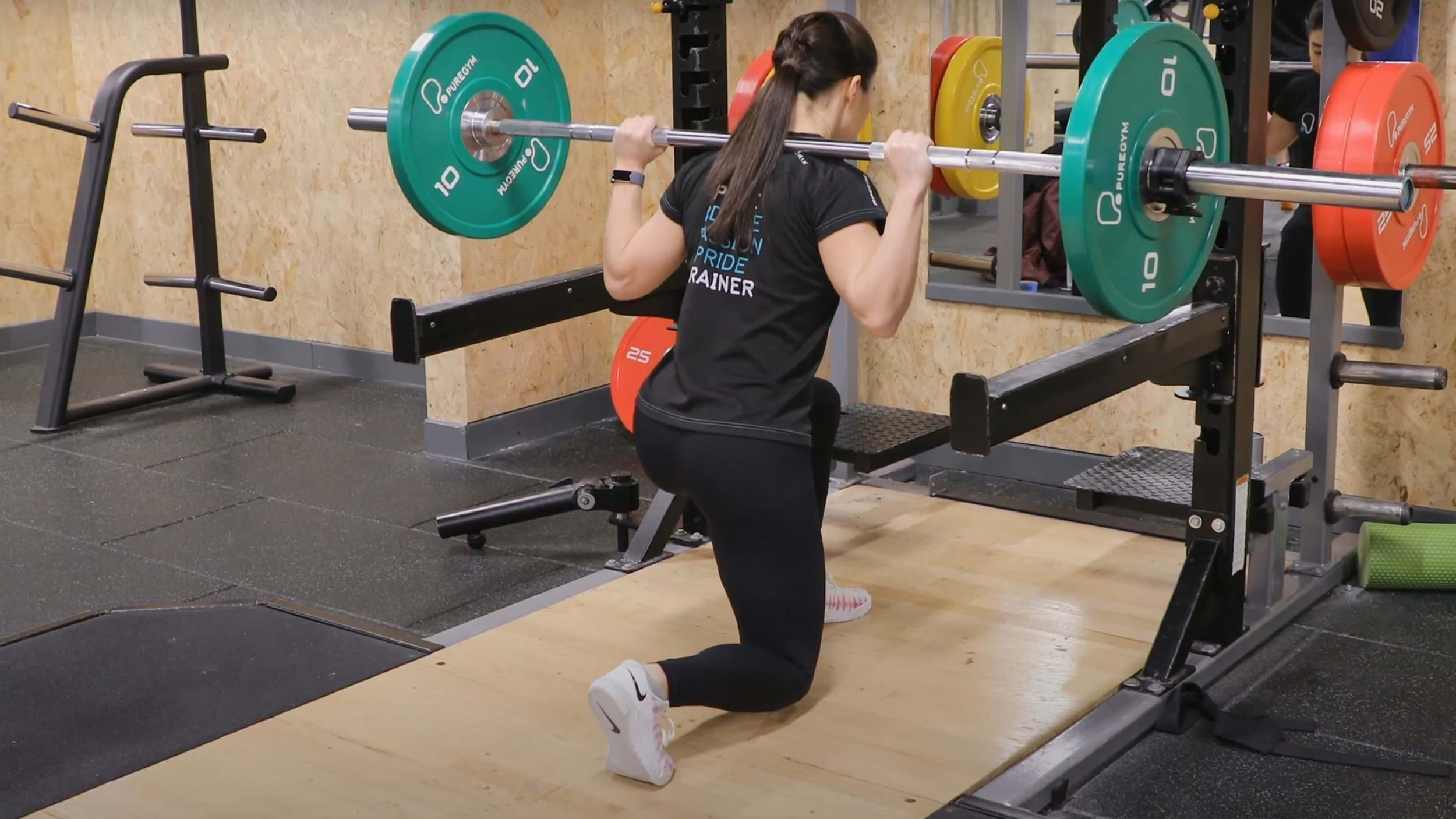Split Squats
What Are Split Squats?

The split squat is a great squat variation that allows you to train the legs unilaterally. This helps to minimise and prevent muscular imbalances between the two legs and ensure single leg strength.
Not to be confused with lunges which are a dynamic exercise, split squats are static with the front leg following the same movement path as a standard squat; the back leg mainly acts as a support.
Split squats work the glutes, hamstrings, calves, and quads, and will help to aid balance and coordination. Training the split squat will help enhance other squat variations and lower body exercises as they strengthen both looks equally. In bilateral exercises the stronger leg can take over with the weaker leg not getting worked as hard -- split squats can help to address this!
Check out some other squat variations: hack squats, Bulgarian split squats, overhead squats, prisoner squats, pulse squats
Commonly Asked Questions On Split Squats
Split squats are a knee dominant exercise, however that’s not to say they are bad for your knees! Performed correctly, split squats will actually strengthen the knee joint and muscles that surround it.
If you’re prone to knee pain or are recovering from a knee injury, start with a light or no weight, or practice hip dominant movements like RDLs to build up lower body strength first.
Split squats target the glutes, hamstrings, calves, and quads, and help to improve core strength, balance, and coordination. As each leg is worked by itself, it reduces muscle imbalances and improves single leg strength.
Split squats and lunges look and feel similar, but challenge the lower body different. While neither is better than the other, split squats can be more effective at building strength while lunges are better for improving stability. Why not include both in your training for a well rounded programme?
Split Squat Tips
You can use most equipment for a split squat, from kettlebells to barbells. If you’re new to the movement, we recommend using dumbbells first as barbells require a greater degree of balance and coordination.
Utilising split squats forces each leg to work individually and helps towards single leg strength further enhancing other bilateral movements that make up your workout regime. Remember to always start your sets on your weaker side to avoid muscle imbalances!
How To Do Split Squats
Choose your weight. If using dumbbells or kettlebells, hold one by each side, or hold a single weight in front of your chest.
If using a barbell, set up the bar in a squat rack so that it sits just under your shoulders. Step under the bar, squeeze your shoulder blades back, and rest the bar on your traps. Stand tall and take three steps back.
Step one foot behind you, with both feet hip width apart. Imagine standing on train tracks, not a tightrope, as this will help you to balance! Keep a soft bend in the back leg to avoid overextending the lower spine and place the majority of your weight in the front leg.
Take a deep breath and then bend your front knee to lower yourself, stopping until the back knee sits just above or lightly taps the floor.
Return tall by pushing through the entirety of your front foot until you are back in the starting position. Keep a soft bend in the front leg to avoid locking out the knee.
Repeat on the same side for your desired reps before switching legs.
If you’re not sure if any of the above exercises are suitable for you, please consult your doctor before you start it. Need guidance on how to perform the exercise? Ask a personal trainer at your gym.